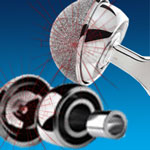Idaho Plaintiff Claims Zimmer Durom Cup Failure
 Oregon resident Richard Seal filed a Zimmer Durom Cup lawsuit on March 25, 2013. The case is currently pending in the U.S. District Court, District of Idaho.
Oregon resident Richard Seal filed a Zimmer Durom Cup lawsuit on March 25, 2013. The case is currently pending in the U.S. District Court, District of Idaho.
Seal claims that after having his right hip replaced with the Zimmer Durom Cup device, he suffered extreme and permanent debilitating injuries. He is seeking in excess of $75,000 in damages.
Plaintiff claims Zimmer hip implant complications
According to Seal’s complaint, written up by his Zimmer hip lawyer, he was implanted with the Durom Cup on May 7, 2007, when he was 60 years old. “The Durom Cup implanted in Mr. Seal has been nothing short of a disaster for him,” the complaint reads. “Rather than resolving his hip problems and helping him recover into the active young retirement he had anticipated, the Durom Cup has failed, causing Mr. Seal unexplained pain and suffering and permanent disfigurement.”
The plaintiff goes on to say that because the manufacturer failed to warn about the potential for Zimmer hip implant complications, he suffered for an unnecessary and prolonged time. This included months of post-surgical recovery.
Zimmer Durom Cup lawsuit points to failure of cup to adhere to bone
After four years of difficulties, the plaintiff went through revision surgery to have the Durom Cup removed and replaced. The surgery took place on February 10, 2011. The surgeon performing the revision found that the plaintiff suffered from a failure of the hip implant to attain stability through bony attachment of the underside of the cup.
Indeed, as far back as 2007, Dr. Lawrence Dorr, M.D., a world-renowned orthopedic surgeon and Zimmer consultant, warned Zimmer of the high rate of premature failures he was seeing in his practice with the Durom Cup. Specifically, he noted that the cup was separating and loosening from the bone, rather than fusing to it, causing patients crippling pain as the metal cup moved around in the hip socket and rubbed against the bone.
Following the revision surgery, Seal claims that he experienced extreme post-operative pain and a prolonged, painful recovery. He states that Zimmer hip implant complications have left him “permanently limited in his activities of daily living,” and that he continues to suffer pain and discomfort.
Design problems cited in the complaint
The FDA approved the Zimmer Durom Cup for use in total hip replacement surgery in 2006. The cup was of a unique design, in that it was not cemented or screwed into place during implantation. Rather, it was designed to bond to the patient’s bone via a porous surface sprayed with a titanium coating.
According to patient complaints, however, the Durom Cup resists bone growth and can become loose and/or pop free from the hip. Because both the cup and the ball inserted into it are made of metal, the system can also release metal debris in the hip joint that can cause swelling and tissue damage and further encourage the loosening of the components.
Seal’s Zimmer Durom Cup lawsuit states that on July 22, 2008, the company suspended sales of the implant for less than one month to investigate reports of complications. On August 16, 2008, the Durom Cup was back on the market, with Zimmer defending the design and arguing that surgical implanting techniques were to blame for early failure rates.

